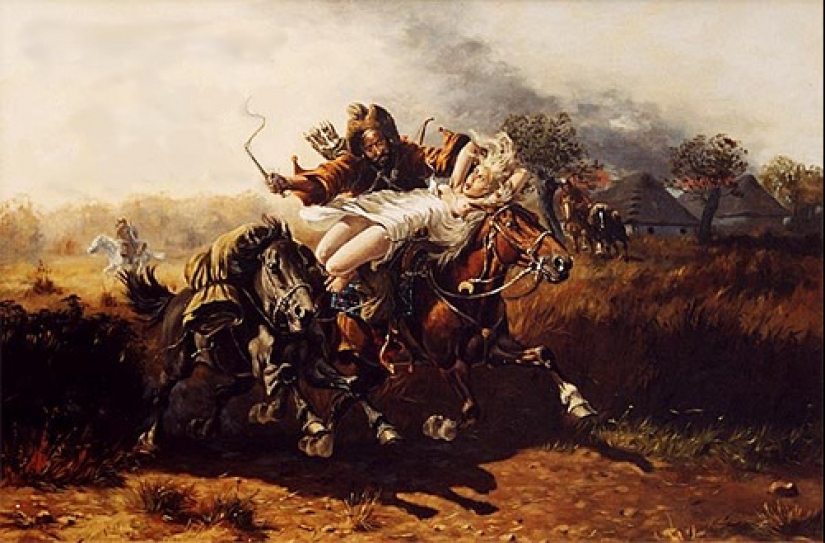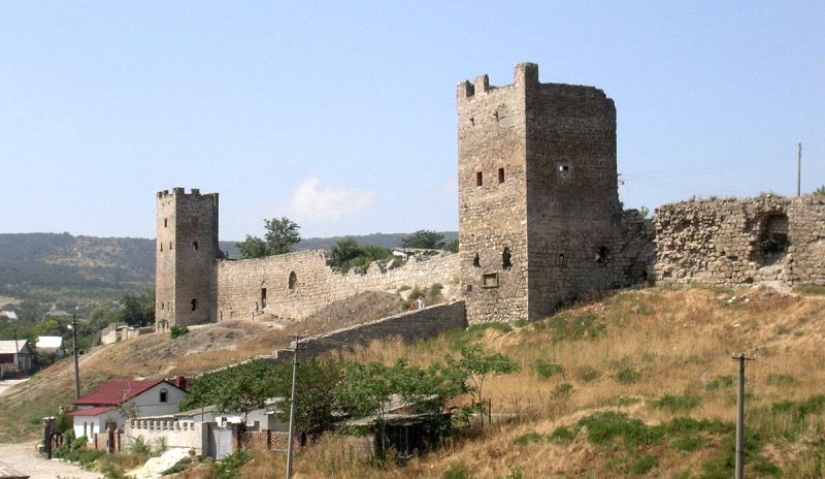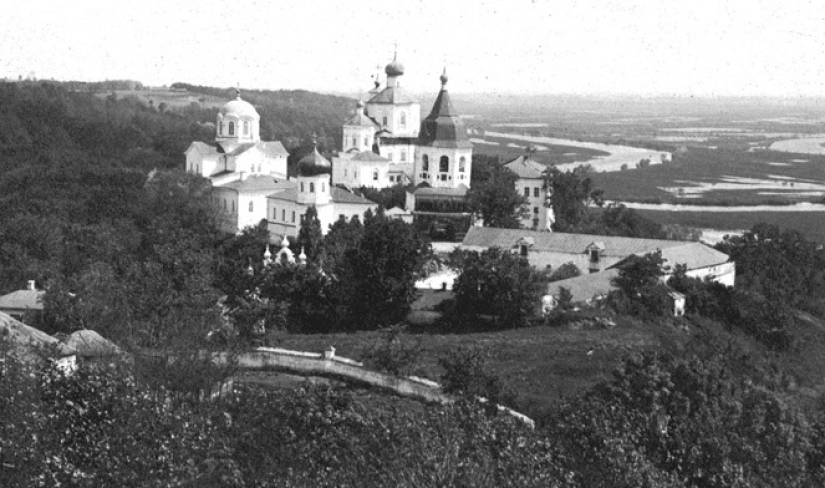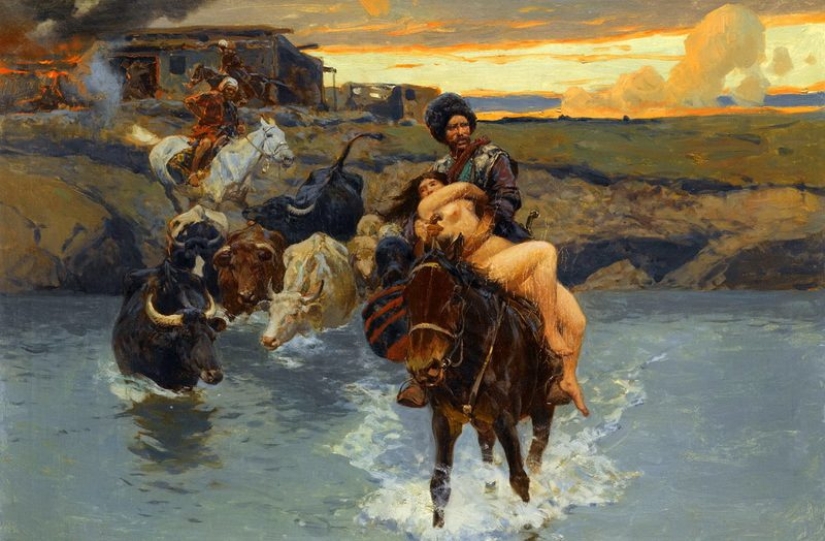How Slavonic slaves appeared in medieval Europe
Categories: History
By Pictolic https://pictolic.com/article/how-slavonic-slaves-appeared-in-medieval-europe.htmlWhen they talk about Slavs in slavery, we immediately imagine blonde half-naked girls in luxurious oriental seraglios, next to imposing sultans in turbans and black eunuchs in fezzes. But it turns out that our tribeswomen languished not only in the harems of Istanbul, Bakhchisarai and Marrakech, but also in the castles and houses of Florence, Venice, Madrid and Barcelona.

The states inhabited by Slavic tribes have suffered for centuries from the attacks of nomads from the east and south. Horsemen in robes operated not only in the borderlands — they reached Moscow and Kiev, plundering and taking the population captive in whole cities.

The number of people captured into slavery was measured in tens of thousands and all of them soon found themselves in a Cafe on the main slave market of the Crimea. From the possessions of the Crimean rulers, some slaves were sent further to the south and east, and some to the west, to Christian Europe. Russian and Ukrainian girls, stately and fair-haired, were mainly appreciated there.
For some time, the main supplier of girls captured in Russia were Genoese, who owned the largest cities of the Crimea. The nomads gave the girls to traffickers for a song, and they resold them profitably. Later, when the Muslims conquered the peninsula, this business passed into their competence, but nothing changed for the slaves.
Despite the fact that slaves in the Middle Ages were equated with cattle in value, the attitude towards beautiful slave girls was completely different. Traces of beatings, excessive thinness or, God forbid, illness, significantly reduced the value of a slave in the market, so they tried to protect them.

The southern French province of Roussillon and its capital Perpignan have become an analogue of the Crimean Kafa for Europeans. Slaves were brought here from different parts of the Old World and offered to buyers at several slave markets. The main "goods" of Roussillon were workers for agriculture, resource extraction or construction, but there were also beautiful Slavs who were acquired in order to make concubines, maids in the house or wet nurses.
The Kiev historian of the XIX century Ivan Luchitsky in his study "Russian slaves and slavery in Roussillon in the XIV and XV centuries" described in some detail how the auction took place, what were the prices for our women and what was their fate after the sale.
The scientist wrote that the girls brought from Ukraine, Muscovy, Poland and Lithuania were called Rusyns, regardless of nationality, and they were valued more than others. If they were ready to give 40 livres for a Black woman, and 50 for a beautiful Ethiopian, then the price of Slavs started from 60 livres. It was impossible to name the upper threshold, since there was a case when a girl from Russia was sold in Roussillon for 2,093 French livres.

This is a huge sum for medieval Europe, because at that time it was possible to rent a house in the city center with a stable and servants for a year for just one livre. A new house in the XV century cost 20-30 livres, and the construction of the castle cost 40-45 thousand of these gold coins.
What is the secret of such a high price? First of all, the Europeans were willing to pay for the beauty of Russian women, which had no equal in the world. And besides, many girls quickly paid for themselves when used as wet nurses. Here 's what Luchitsky wrote about it:
Historian Vasily Klyuchevsky mentioned in one of his scientific works the fact that lullabies in Russian, Ukrainian, Polish and Lithuanian were heard on the shores of both the Black and Mediterranean Seas.

The slave Rusinka, serving in the house, could become a kind of indicator of the high status of the owner and his excellent taste. A letter from a noble lady to her son has been preserved in the city archive of Florence, in which she strongly recommended him to purchase a Russian girl:
In documents of that time, there is often a mention of "white Tatars", while the names of these girls were Slavic. It seems that the slavers called the girls brought from Tartary - a distant cold land located in the northeast.

In the late Middle Ages, in the XVII century, despite the desire of Europeans for enlightenment, the slave trade did not disappear anywhere. Crimea at that time was already Tatar and the khan himself and his murzas had huge incomes from slave markets. The ambassador of the Grand Duchy of Lithuania to the Crimean Khanate, Michalon Litvin, saw at Perekop a colossal number of people following a continuous stream to the peninsula. There were so many of them that the diplomat doubted whether anyone was still alive in the parts from where they were brought.
In the XVI-XVII centuries, neither the Polish kings nor the tsars of Muscovy had enough strength to fight the Crimean Khan. In Russia, the problem of prisoners, at least partially, was solved by ransom, which was collected from everyone according to the principle of tax. It was called "polonyanichnye money" and was officially collected from 1551 to 1679. The amount of tax at first varied depending on the annual expenses for the redemption of slaves, and then became fixed — 2 rubles per plow.
In the XVII century, when the Ottoman threat loomed over the whole of Europe, Christians became more united. The Orthodox were no longer considered heretics and pagans, but were recognized as people who knew Christ, but lost in their faith. The trade in Slavic slaves has declined, as Christianity condemns the sale of co-religionists. Despite this, the slave trade did not completely disappear and Russian women could sometimes be found in slave markets.

But in the XVII century, the first happy stories of the return of women from slavery began to be recorded. Records of this kind were made in monasteries, where former slaves were sent for confession and other church sacraments. The clergy found out from the women what sins they committed in a foreign land and how they puked their faith.
One of these monastic records describes the fate of a girl named Catherine, who was taken into captivity by the Nogai Tatars in 1606. The slave girl was sold to the Crimea, from where she was rescued by the Cossacks after 15 years. Catherine walked a long way on foot to Putivl, where she was waiting for a real interrogation in the monastery. After all the formalities, she continued her journey and returned home to the village of the village of the River, near Kolomna.

No one was waiting for Catherine at home, so everyone thought she was dead. The woman's husband married a second time, but the churchmen awarded him to reunite with his miraculously saved wife. In the monastery book this story is written as follows:
The story of the Russian girl Feodora, who was also taken into captivity by Nogais at the age of 17, is also well known. She said that her enemies took her to Kafu, where they sold her to Istanbul. There a rich Jew became its owner. The young slave refused to accept someone else's faith, but drank and ate with the owner's family. Over time, the Jew sold her to an Armenian, and from that the slave got to a noble Turk. He persuaded her to convert to Islam, but could not break her faith.
In the monastery, Theodora said that deliverance came to her in the person of a Russian guy Nikita Yushkov, who bought her out of slavery. They got married in one of the Christian churches in Istanbul and their sons Frol and Athanasius were born, who were also baptized into Orthodoxy.

Such an unexpected happy ending. Unfortunately, such cases were rare. Most of the girls went missing in a foreign land and the family never heard of them again.
In 1783, the Russian army took Crimea from the Tatars and the slave market in the Cafe, one of the last in Europe, ceased to exist. The center of the slave trade moved to the North Caucasus, where the trade in Slavic girls was noted even in the XIX century. Up to 4 thousand slaves, including women, were delivered to Turkey from the Caucasus annually.
The slave trade was carried out mainly by sea, which was strenuously hindered by the fleet of the Russian Empire. This business has become extremely risky and unprofitable, and the demand for slaves has fallen dramatically. At the turn of the XVIII and XIX centuries , the British traveler Edmond Spencer wrote:
Despite the fact that the slave market in Roussillon ceased to exist centuries ago, historians have a lot of information about its turnover, thanks to notarial acts of sale. It is known that the share of Slavs sold into slavery there was 22% of the total number of slaves. But in the south of France, they could not surpass the Cafe market, through which a total of 3 million residents of Ukraine, Muscovy and Poland passed. About half of these unfortunate people were girls.
Recent articles

Girls from our collection could easily compete for the title of "Miss universe". And this despite the fact that they are all ...

Young Milla Jovovich in the arms of Michael Jackson - this shot from almost thirty years ago, published on the actress’s ...

From explosions at the slightest collision to endless drifts without a scratch, cinema has long since devised its own laws of ...